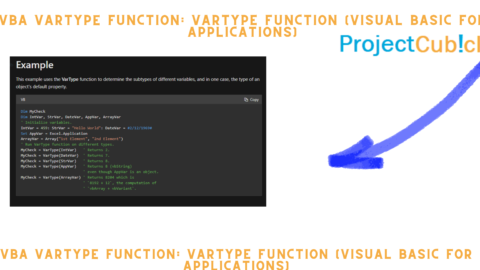COUNTA Excel Function: An In-Depth Guide
When analyzing data, Microsoft Excel is one of the most popular tools in use today. Excel offers a wide range of functions and formulas that make it easy to manipulate and summarize data. One of these functions is the COUNTA function, which is a powerful tool for counting non-blank cells in a range. In this article, we will take a closer look at the COUNTA Excel function, its syntax, and how it can be used to analyze data.
Table of Contents
Understanding the COUNTA Excel Function
The COUNTA function in Excel is used to count the number of cells in a range that are not empty. It is a versatile function that can be used with any type of data, including numbers, text, and logical values. The syntax for the COUNTA function is as follows:
COUNTA(value1, [value2], ...)
Here, value1 is the first value or range of values that you want to count. Separating them with a comma can also include additional values or ranges. The COUNTA function returns the number of non-blank cells in the specified range.
How to Use COUNTA Excel Function?
Using COUNTA is straightforward. Here are the steps:
- Select the cell where you want to display the result.
- Type =COUNTA(
- Select the range of cells that you want to count.
- Type ) and press Enter.
The result will be the number of non-empty cells in the selected range.
Examples of COUNTA Excel Function
Let’s look at some examples to see how COUNTA works:
Example 1: Count the Number of Non-Empty Cells in a Range
Suppose you have a table with some data:
| Name | Age | Gender |
|---|---|---|
| John | 25 | Male |
| Jane | Female | |
| 30 | Male |
To count the number of non-empty cells in the table, you can use the COUNTA function:
=COUNTA(A2:C4)
The result will be 5, which is the number of non-empty cells in the range A2:C4.
Example 2: Count the Number of Non-Empty Cells in a Row or Column
You can also use COUNTA to count the number of non-empty cells in a row or column. For example, to count the number of non-empty cells in row 2, you can use:
=COUNTA(A2:C2)
The result will be 2, which is the number of non-empty cells in row 2.
Similarly, to count the number of non-empty cells in column A, you can use:
=COUNTA(A2:A4)
The result will be 2, which is the number of non-empty cells in column A.
Example 3: Count the Number of Non-Empty Cells in a Range with Formulas
COUNTA can also count cells that contain formulas. For example, suppose you have a table with some formulas:
| A | B | C | D | E |
|---|---|---|---|---|
| Item | ||||
| Item 1 | 5 | 3 | ||
| Item 2 | 8 | 2 | ||
| Item 3 |
To count the number of non-empty cells in the table, including cells with formulas, you can use:
=COUNTA(A2:E4)
The result will be 6, which is the number of non-empty cells in the range A2:E4.
Example 1: Counting Non-Blank Cells in a Range
Suppose you have a range of cells containing data, including some blank cells. You can use the COUNTA function to count the number of non-blank cells in that range. For example, if your data is in cells A1 through A10, you can use the following formula:
=COUNTA(A1:A10)
This formula will count the number of cells in the range A1:A10 that are not blank.
Example 2: Counting Non-Blank Cells in Multiple Ranges
You can also use the COUNTA function to count the number of non-blank cells in multiple ranges. For example, suppose you have two ranges of data, A1:A10 and B1:B10. You can use the following formula to count the number of non-blank cells in both ranges:
=COUNTA(A1:A10, B1:B10)
This formula will count the number of cells in both ranges that are not blank.
Example 3: Counting Non-Blank Cells in a Row or Column
You can also use the COUNTA function to count the number of non-blank cells in a row or column. For example, if you want to count the number of non-blank cells in row 1, you can use the following formula:
=COUNTA(1:1)
This formula will count the number of cells in row 1 that are not blank.
Similarly, if you want to count the number of non-blank cells in column A, you can use the following formula:
=COUNTA(A:A)
This formula will count the number of cells in column A that are not blank.
Conclusion
The COUNTA Excel function is a powerful tool for analyzing data in Microsoft Excel. By counting the number of non-blank cells in a range, you can quickly summarize your data and gain insights into your information. Whether working with numbers, text, or logical values, the COUNTA function can help you analyze your data more efficiently and effectively.
We have come to the end of our first post. We hope it helps you. You can read this article on the subject or you can read this article we found for you from another site.
Hello, I’m Cansu, a professional dedicated to creating Excel tutorials, specifically catering to the needs of B2B professionals. With a passion for data analysis and a deep understanding of Microsoft Excel, I have built a reputation for providing comprehensive and user-friendly tutorials that empower businesses to harness the full potential of this powerful software.
I have always been fascinated by the intricate world of numbers and the ability of Excel to transform raw data into meaningful insights. Throughout my career, I have honed my data manipulation, visualization, and automation skills, enabling me to streamline complex processes and drive efficiency in various industries.
As a B2B specialist, I recognize the unique challenges that professionals face when managing and analyzing large volumes of data. With this understanding, I create tutorials tailored to businesses’ specific needs, offering practical solutions to enhance productivity, improve decision-making, and optimize workflows.
My tutorials cover various topics, including advanced formulas and functions, data modeling, pivot tables, macros, and data visualization techniques. I strive to explain complex concepts in a clear and accessible manner, ensuring that even those with limited Excel experience can grasp the concepts and apply them effectively in their work.
In addition to my tutorial work, I actively engage with the Excel community through workshops, webinars, and online forums. I believe in the power of knowledge sharing and collaborative learning, and I am committed to helping professionals unlock their full potential by mastering Excel.
With a strong track record of success and a growing community of satisfied learners, I continue to expand my repertoire of Excel tutorials, keeping up with the latest advancements and features in the software. I aim to empower businesses with the skills and tools they need to thrive in today’s data-driven world.
Suppose you are a B2B professional looking to enhance your Excel skills or a business seeking to improve data management practices. In that case, I invite you to join me on this journey of exploration and mastery. Let’s unlock the true potential of Excel together!
https://www.linkedin.com/in/cansuaydinim/










